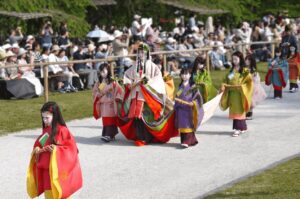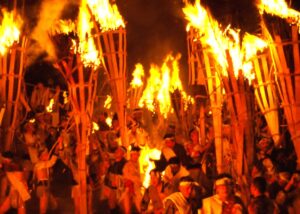What is the Jidai Festival in Kyoto?
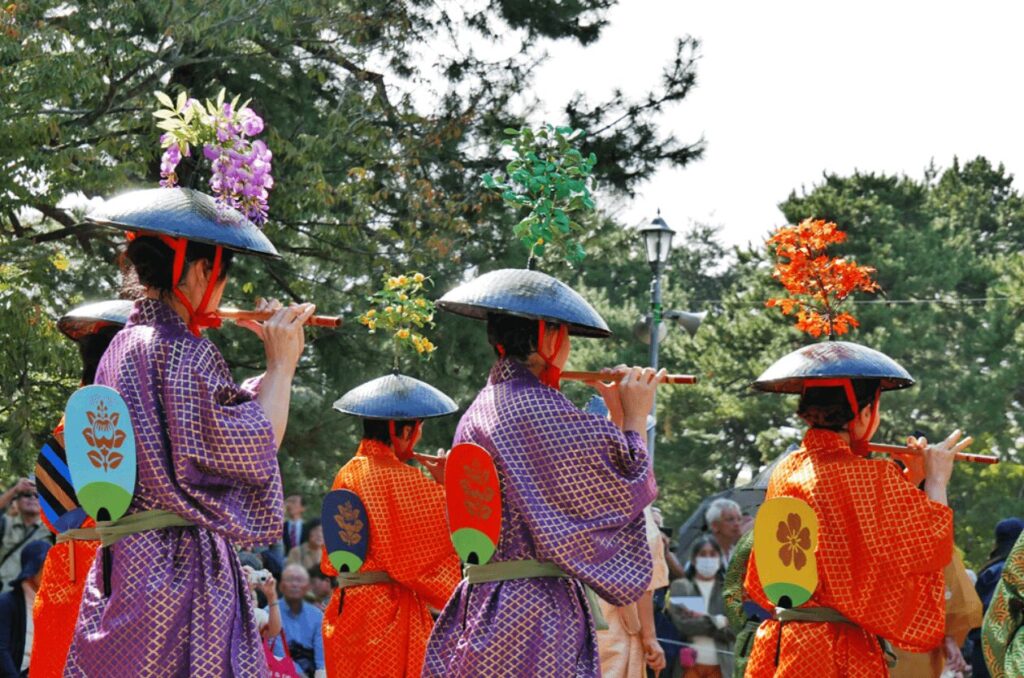
Kyoto is one of the most ancient and oldest cities of Japan.
Especially because of the city’s archaic nature, there are many festivals celebrating Kyoto’s tremendous past.
Out of the many festivals, we will be focusing on Jidai Matsuri, one of the three most famous festivals in Kyoto, standing alongside Gion Matsuri and Aoi Matsuri.
Read on to find out all you need to know about Jidai Matsuri!
Contents
- What is Jidai Matsuri / Festival?
- When is Jidai Matsuri held?
- Where does the procession take place?
- History of the Jidai Festival
- About the procession
- How much is the admission fee?
- Summary
1. What is the Jidai Matsuri / Festival?
Jidai Matsuri / Festival is an autumn festival held in October in Kyoto where participants dress up in decorative costumes representing almost every era of Japanese history, as the main theme of the festival is about the history of Kyoto.
When translated directly, Jidai Matsuri is “Festival of Ages”.
The procession is separated into historical eras, going in a reverse chronological order from the Meiji era to the Heian period.
Watching the procession is like seeing a real life museum pass by in front of you.
Despite it being a relatively new tradition to Kyoto, it never fails to garner a large audience every year.
Jidai Matsuri Official Website
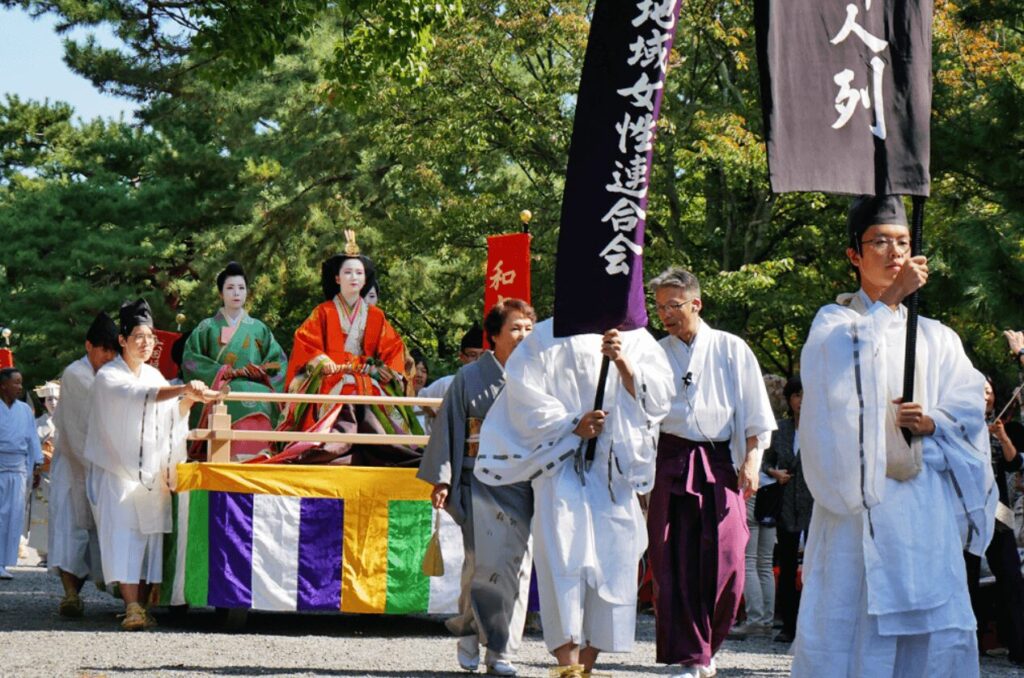
There are about 2,000 participants who dress up in costumes from the past eras, representing every bit of Japanese culture and history.
Some are characterised as famous historical figures of the past, like Sakamoto Ryoma who was a famous Japanese samurai.
Spectators are also able to see the armour of Oda Nobunaga and his commanders, and the clothes of common people of the Muromachi period which are strikingly beautiful.
One of the purposes of the festival is to showcase the traditional craftsmanship that Kyoto has cultivated over the thousand years.
For this reason, the costumes and ritual objects are made in the authentic way that replicates the techniques used a thousand years ago.
Visitors get to grasp the historical depth of Kyoto at a glance, which has an extensive history that other cities of Japan cannot easily rival.
The spirit and the pride of the Kyoto people are conspicuous in the atmosphere.
2. When is Jidai Matsuri held?
The festival is held every year on 22 October (the anniversary of the foundation of Kyoto), and is only held once a year on this day.
Be sure to bring a coat with you as it can get a little chilly in autumn.

3. Where does the procession take place?
The procession proceeds from the Imperial Palace to the Heian Shrine.
Since Jidai Matsuri is unique and exclusive to Kyoto, it is the only place where you will get to see this special parade!
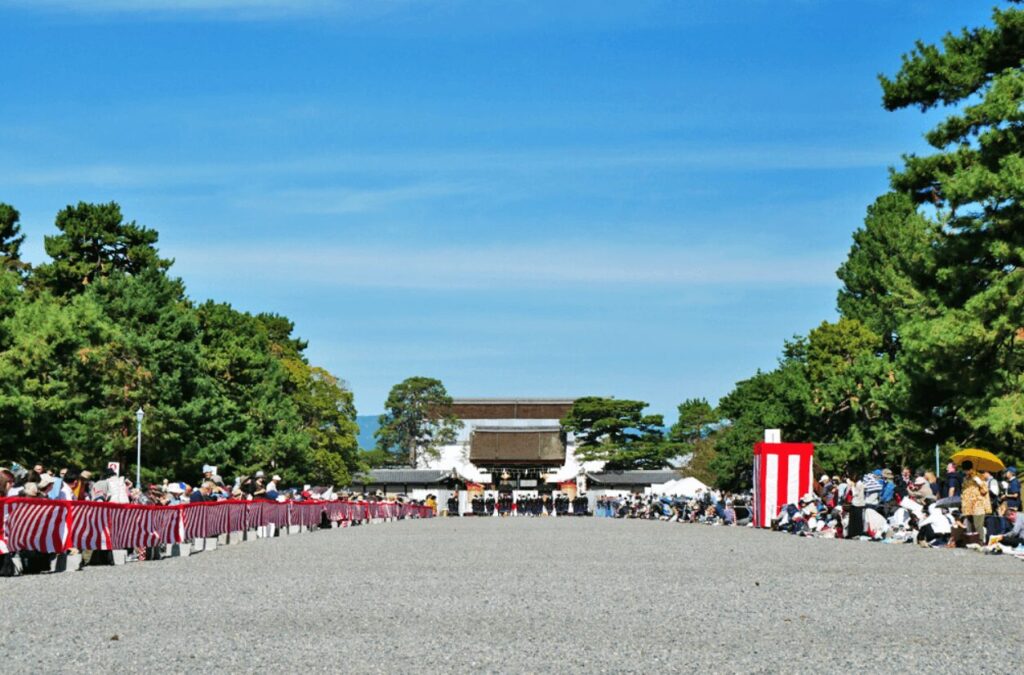
4. History of the Jidai Festival
Both the Heian Shrine and the Jidai Festival were established in 1895 to commemorate Kyoto’s rich history and tradition.
This is because Kyoto had been Japan’s capital for a thousand years before Tokyo was nominated as the new capital in 1868.
Despite the relatively short history of the festival, it is considered to be one of the three most famous festivals in Kyoto, along with Gion Matsuri and Aoi Matsuri, both of which have more than a thousand-year-long history.
This insinuates the significance and importance of Jidai Matsuri.
5. About the procession
The procession starts off from the Imperial Palace to the Heian Shrine, encompassing a total of two hours to watch the entire parade pass by.
The entire route of the parade is 2km long.
There are various shrine rites leading up to the procession.
These include paraders offering prayers and flowers to the shrine, the spirits of the Emperors being transferred to mikoshi (portable shrines) for the procession, and sacred food and flowers being presented to the deities before the procession begins.
By having the spirits of Emperor Kanmu and Emperor Komei march the cities of Kyoto and observe the lives of the people today, it helps to unite the hearts of Kyoto citizens and pray for peace altogether.
This is the core idea of Jidai Matsuri.
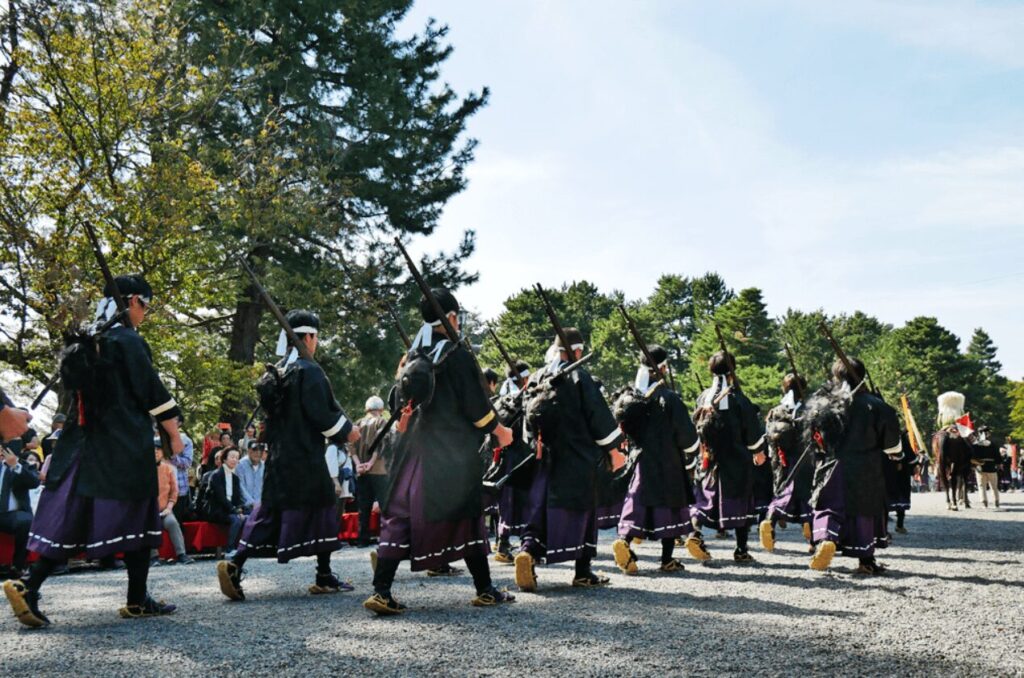
6. How much is the admission fee?
There is no admission fee!
There are free viewing areas that line the parade route.
For a better view, there is some paid seating at the Kyoto Imperial Palace, in front of the Kyoto City Hall, and along the path to Heian Shrine.
Seats cost around ¥4,000 for one seat, and these can be reserved beforehand online.
7. Summary
So how was it?
Jidai Matsuri sure does have a lot to offer, for anyone interested in seeing a traditional side to Japanese festivals.
You get to experience the colourful costumes of centuries ago blending in with the idyllic scenery of Kyoto.
If you ever visit Kyoto in the autumn season and want to immerse yourself in traditional Japanese culture with a little hint of time travel, what better way to enjoy yourself than visiting Jidai Matsuri!
For more festivals, refer to our Ninja Blog article on 8 Must-Visit Festivals in Kyoto
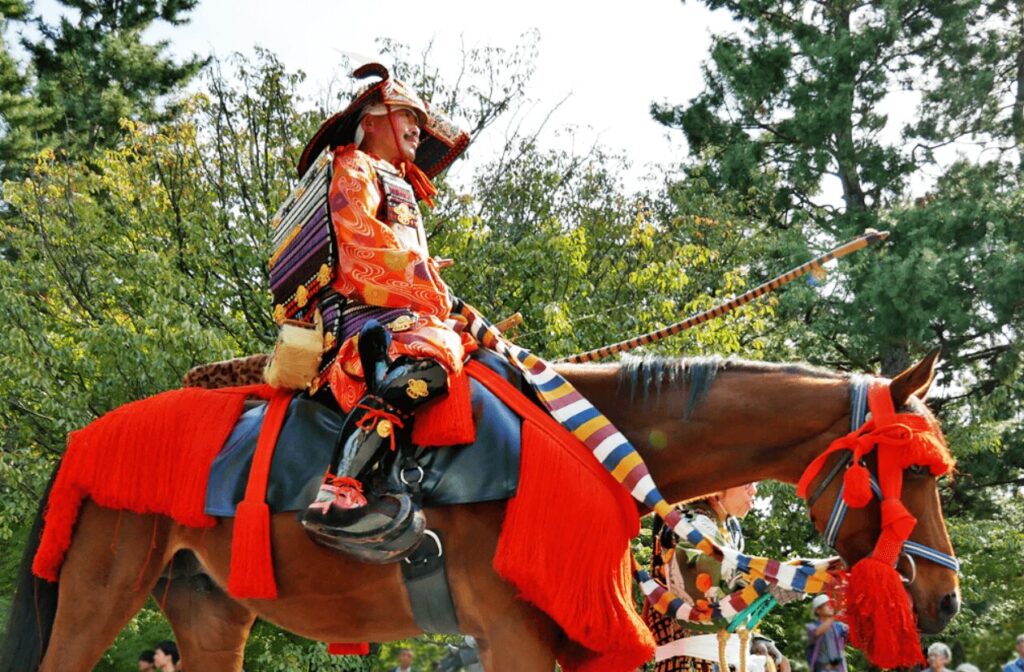
What are we?
We run Ninja Experience Cafe in Tokyo, Kyoto and Osaka, Japan.
Here you can immerse yourself in Japanese culture through experiencing ninja training.
Both adults and children are welcome to try their hand at defeating the ninja master inside the cafe.
The cafe is an indoor interactive zone, so it can be enjoyed even on rainy days.
If you are thinking "I want to be a real ninja too!” or interested in becoming a real ninja, please visit us.
Reservations can be made here.
Unauthorized copying and replication of the contents of this site, text and images are strictly prohibited.

